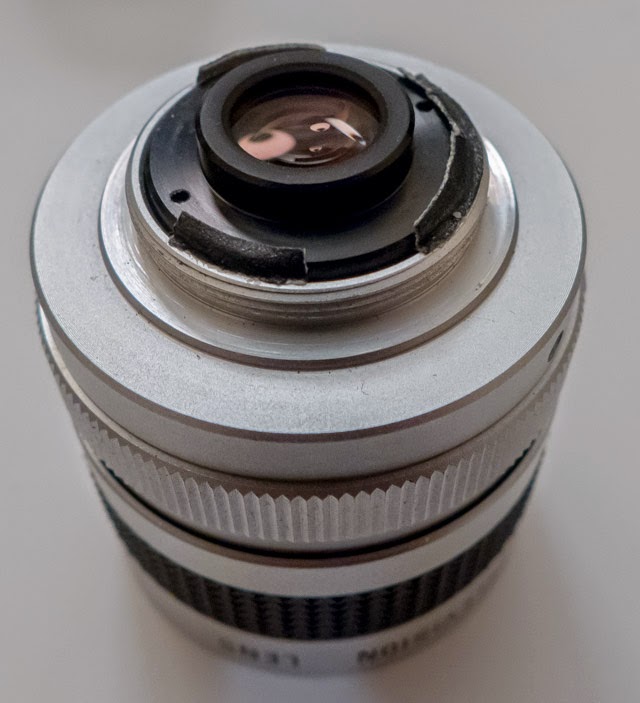The X100S has developed into my favorite camera, next to the Lumix LX7. This post is all about the X100S. Coming from mechanical SLRs, the silence of the leaf shutters is really pleasant. In a later post, I will write about film cameras with leaf shutters. The X100S, in addition to the super silent shutter, adds all the manual controls I am used to from my purely mechanical cameras.
For the camera to be useful beyond street photography, some additional accessories could come useful.
Portraiture Lens
The 63 degrees field of view, equivalent to a 35mm lens, is pretty ideal for photojournalism, showing the scene around the subject, slightly enlarging the center of the image, where the subject would be placed.
In portraiture, a slight distortion of the image center leads to unwanted effects, e.g. big noses and things of similar nature. Also, in portraiture, one actually does not want to show any of the surrounding scenery. Usually lenses between 90mm and 120mm (full frame equivalent) would do the trick.
The X100S, however, is stuck with a single lens.
To the rescue, Fuji provides 2 auxiliary lenses for the X100/X100S/X100T, a wide angle converter and a telephoto converter. For obvious reasons, the wide angle converter will not help for portraiture.
So, the telephoto converter (
Fuji TCL-X100), is what we need to look at.
The TCL-X100 will result in an equivalent "normal" 50mm field of view. Although not ideal for studio portraiture, this is a starting point for taking portraits.
Off Camera Flash
The built-in flash is nice to have, however, it creates really harsh light and needs to be gelled (scotch tape) to diffuse and warm up the light a little.
Fuji offers
3 external flash units, one is ridiculously large, the second one provides a forward angle only, while the third and cheapest option (Fujifilm EF-20) can be pointed upwards in several angles. Still, even this flash would be sitting right on top of the camera.
Whichever option one choses, to get the flash off camera, one might use a flash remote cable. The contacts on Fujifilm's cameras' hot-shoes are similar to Canon cameras' hot-shoes. And in fact, Canon compatible flash cable work just fine with Fuji flashes, TTL and all.
There is a second option for off camera flash: RF (radio) remote triggers, my favorites! Note that radio triggers only work with manual flash settings.
Personally, I tested 2 different brands, both very inexpensive:
- WANSEN WS-603C
- YONGNUO RF-603C
The YONGNUO got 4+1 contacts in the hot-show (4 plus ground), while the WANSEN got 6+1 contacts.
The YONGNUO units have no problems to fire the Fuji flash,
while the WANSEN units struggle. I figure that's got something to do with the Fuji flash's 4th contact, which is blanked out by the YONGNUO remote triggers.
Actually, it turned out that one of the WANSEN units was bad, i.e. not popping the flash, whilst otherwise behaving normally.
My recommendation is
still towards the YONGNUO RF-603C!
Filter Holder & Lens Hood
Yeah, I know, filters are for wimps! However, here comes your favorite camera, the lens of which cannot be exchanged... maybe here´s a reason to add a useless UV-filter, just to protect the front element of the non-exchangeable lens of your very favorite camera... makes sense?
Of course, you can get the Fuji-thing for about 80 Euros... or, you fetch one of the very cheap after-markets part (LA-49 X100). And screw on your favorite useless UV-filter!
Filters
However useless the protective UV filter is, there are some filters really useful to the X100S.
With a "circular polarizer" (which has actually nothing to do with circular polarization!), one can adjust for polarized light, such as reflections and polarization of the sky.
My X100S bag also holds a filter that is primarily used for astro-photography, a so called "sky glow filter". This filter blocks spectral lines of man made light sources, thereby enhancing starlight. Filters of this kind come for 2" eyepieces, which is in the same ballpark as the X100S filter holder. A small piece of tape interfaces between the filter and the lens' filter thread. There are more extreme filters, e.g. for hydrogen and oxygen lines, however, this would be taking it to the extremes.
Tripod
A decent tripod should be in any serious photographer's bag!
Full size tripods require some space, which the usual bag does not offer, hence, I went for the
MeFoto DayTrip. For a price of next to nothing, you'll get a very sturdy, not too tall, tripod.
A Strap
Probably the last thing anyone would be concerned with is the strap used to hold the camera. What I am concerned, the strap should be the first consideration someone should half, after buying a camera.
My preference goes clearly towards the cross-body-style
Black Rapid Strap and clones thereof.
I held SLRs, DSLRs and other cameras, including the X100S that way, ready to shoot in an instance! Very cool!
Cable Shutter Release
While this sound really outdated, the X100(S/T) sports a thread for a mechanical shutter release cable. Great stuff with an oldschool camera such as the X100(S/T). Great for really long exposures. That brings us back to the filters, in particular the ones used for astronomy.
Batteries and Charger
Digital cameras run on batteries, and batteries run empty occasionally. So, the more batteries available, the better. However, at some stage, batteries need to be recharged.
Again, the after market offers a really nice deal.
PATONA offers a charger for multiple power sources, including 2 batteries for a very competitive price. The charger itself allows for charging from mains, USB or 12V (car) power sources, all necessary cables included! Not much more to wish for, I figure.
The Bag
Finally! I mentioned "the bag" sometimes, previously, and this is it:
The
Urban Photo Sling 150 by LowePro.
The Entire Outfit
 |
| all items shown fit in the bag shown, actually, I forgot the cable shutter release.... |

































